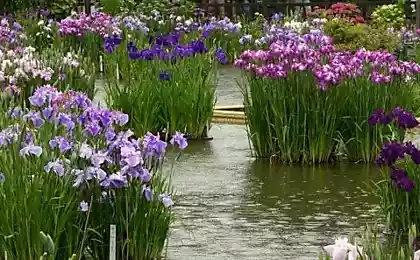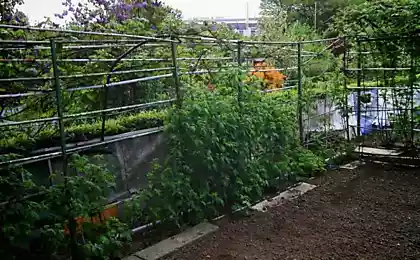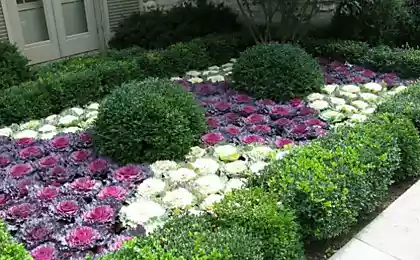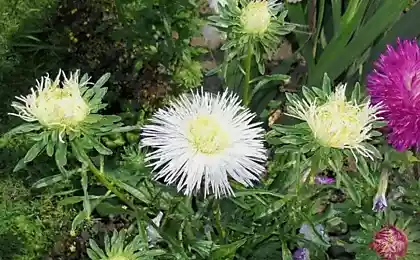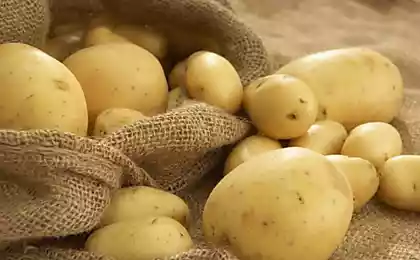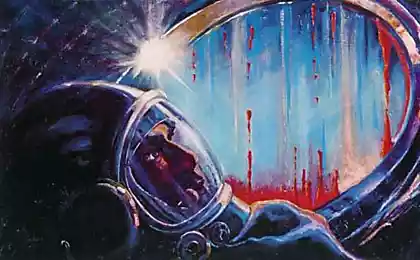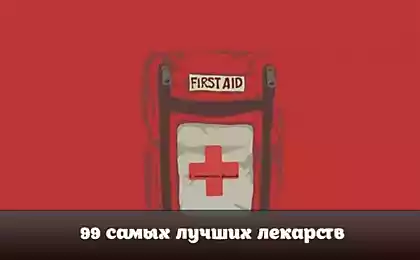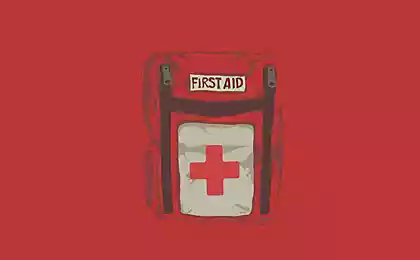848
Siberian irises: characteristics, planting and care
For a long time Siberian irises waited patiently for the attention. It hard to Express myself when all the love and glory go to your fellow classic garden irises, but the recognition came!
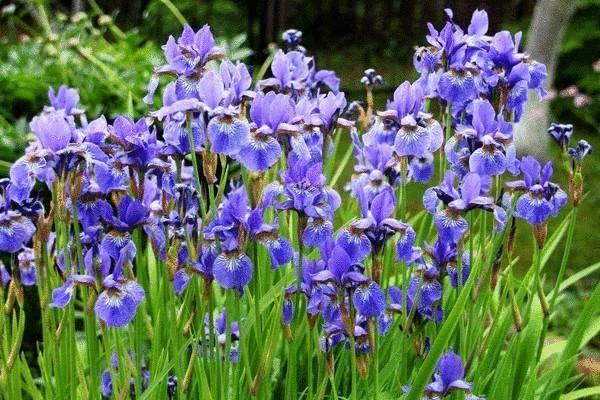
Rainbow! It is translated the name of the flower, with a history spanning millennia. So the ancient Greeks called the winged messenger of Zeus and Hera, the personification and goddess of the rainbow. Iris, or iris, was out of the clouds after rain, down to earth (aerial arch, shimmering with all the colors of the solar spectrum. On earth the colors of the rainbow scattered in different colors.
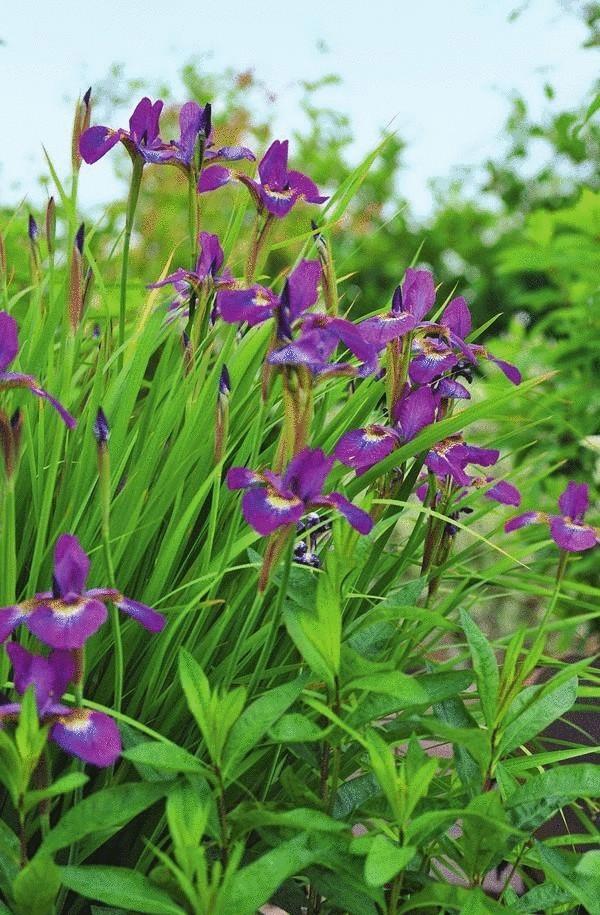
But the richness of shades of the incarnation of iris, truly a gift from the gods that can not be ignored. Hippocrates, who gave the name is familiar to flower, this is clearly not doubt. The founder of modern plant classification, Carl Linnaeus retained the name. Subsequent botanists have collected and counted all irises of our planet, and found that there are more than 200 species!

All irises are divided into two large groups according to the presence or absence of barbs on the outer petals of a flower — bearded and abrogate. To bearded irises include the majority of garden varieties.
Siberian irises are included in the group abrogate irises. This group is the most numerous in nature. The ancestors of the varieties and hybrids grade Siberian irises are 3 types:

The flowers of Siberian irises smaller in comparison with the traditional flowers of garden irises, but they are more in the Bush. At four years of Bush can be up to forty stalks!

In addition, smaller petals easier to resist and to preserve the beauty in the rain and wind. Interestingly, in some varieties the buds bloom at once, Recalling the lush bouquets have others sequentially, prolonging the time of flowering. For different purposes in the design we need both. The longest bloomingvariety with branching stems, including nearly white, with a lavender tint of iris ‘Hohe Warte’. Of domestic varieties takes a record ‘Leader of the Altai’.
Cute Siberian irises with birches in the background, our eyes ready to accept as part of mother nature, so we can easily find area for them in the garden, while the southern luxury exotics from the group of bearded irises are applying for an official reception and ceremonial places.
Delightful flower, wonderful colors and pattern on the petals require proper feeding. Therefore, when choosing varieties for the garden, it is important to evaluate not only the parts of a flower, but the plant shows off its beauty.
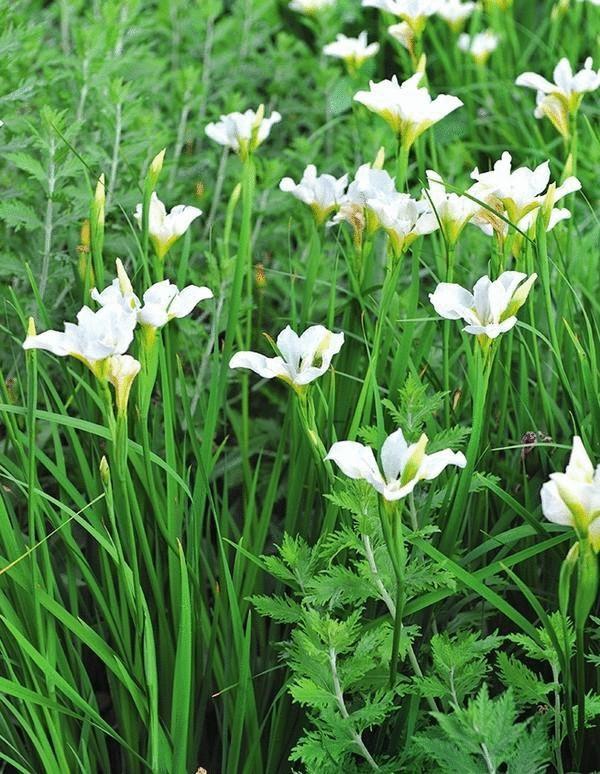
Flowers can float flock, towering over the leaves, or be on par with them. And it is quite difficult to appreciate their beauty from afar, if they do not reach the tips of the leaves and hiding among them. At the same time in a container such irises will be interesting. In short, choose your plants with tall stems of 40 to 160 cm!
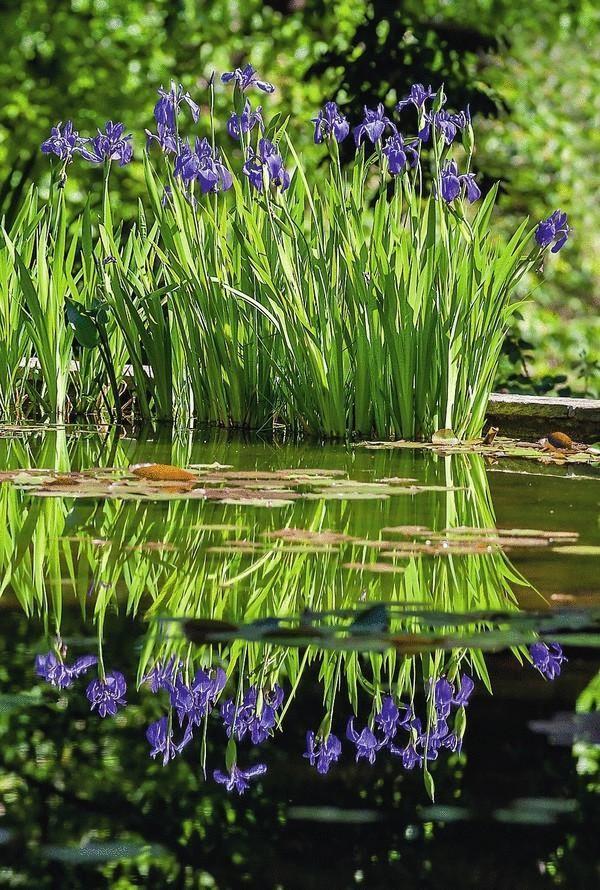
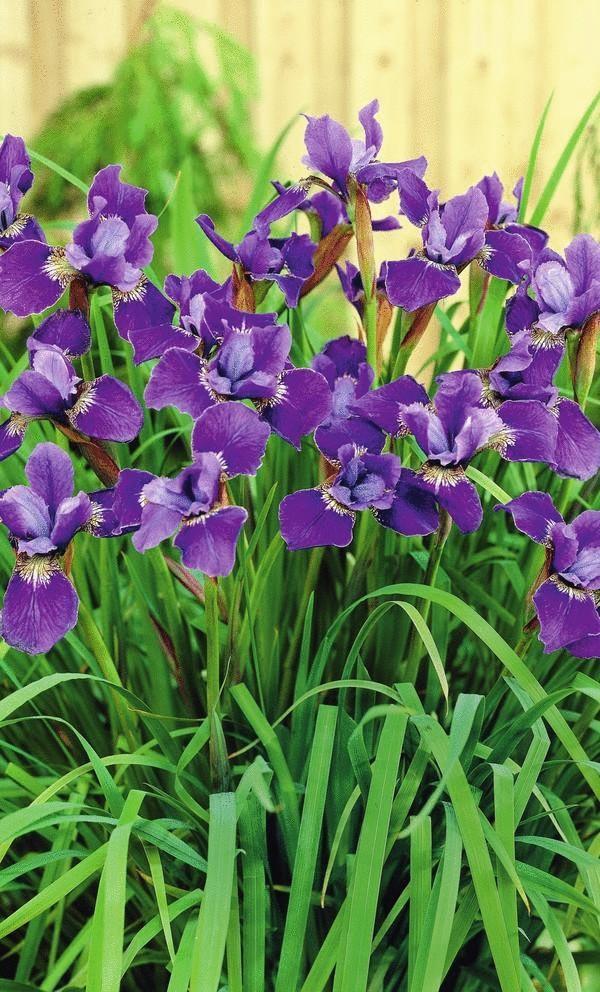
Generous flowering is only possible in open areas.
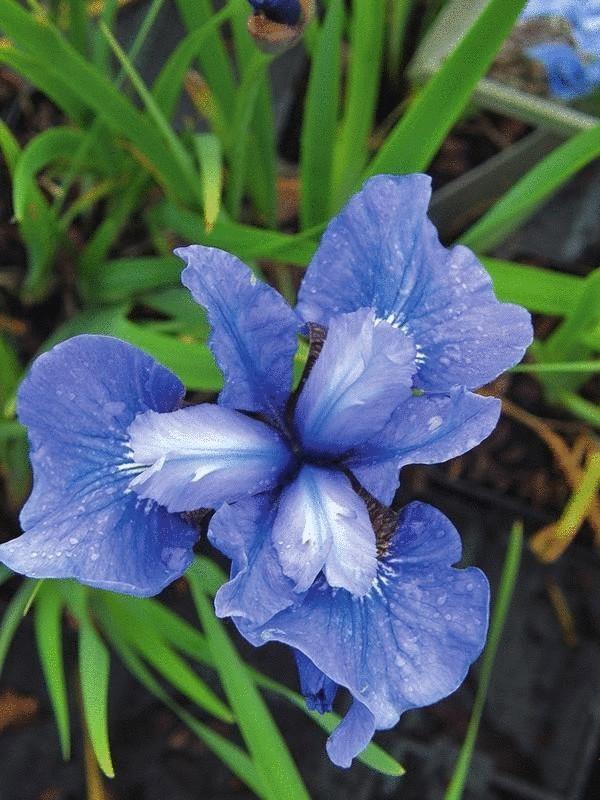
Purple and pink varieties are particularly showy.
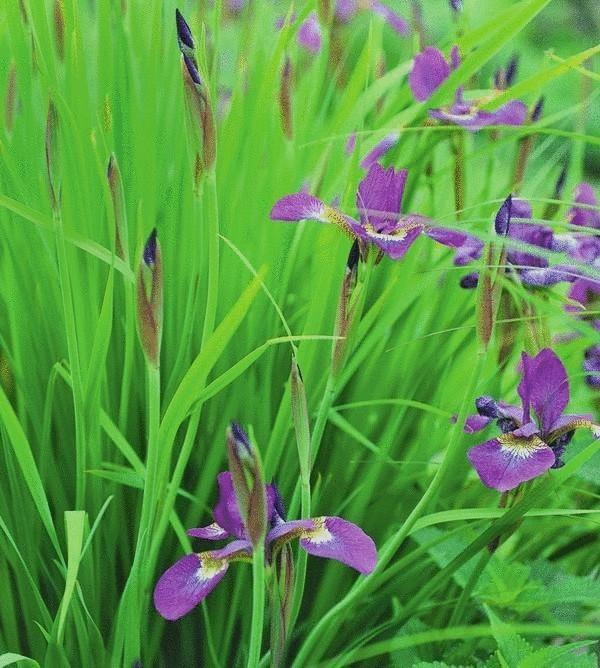
Selection mistakesto choose the sun. To drainage, these irises do not have high requirements and can also grow on humid areas with a high groundwater table, unsuitable for bearded irises. The soil should be fertile, moderately moist and free of weeds. Best — light loam, rich in humus.
To posability and transplant irises need in the second half of August or in early spring. Before planting, dig the soil deeply and fill her well-decomposed compost or humus. Delenki prepared for planting, pruning leaves and roots. Leaves leave 1/3 of the length, the roots are pruned to 10-12 cm During landing zaglubljaja rhizome approximately 5-7 see this is the difference between Siberian irises from iris group of bearded, rhizome which creeps over the surface. The distance between the bore holes depending on the size telenok — 30-50 cm After planting the plants well and pour over mulch. Most bloom profusely large overgrown bushes. With age, the bloom wanes, and the middle of the Bush is gradually disappearing. When dividing the old bushes, of dead rhizomes are removed.
Attention! Siberian irises prefer slightly acidic soil, so when planting it is impossible to make lime.
Rhodesnow feed irises full of complex mineral fertilizers. While young plants will not get stronger after planting, you need a good watering. Over time, irises are growing, creating a strong root system, and it is easier to cope with lack of moisture. Therefore, adult shrubs can be watered less frequently, but in drought irrigation is required. It is better to water infrequently, but abundantly, promazyvaya the soil to the whole depth of the roots. In the formation of stems after flowering, or make a potassium-phosphorous fertilizer. In late autumn, after first frost (or early spring) old leaves cut to a height of 15 cm So as not to reduce the winter hardiness of shrubs lost their natural shelters, and plants useful to mulch for the winter. Mulching a well-matured humus or compost layer of about 2 cm in spring and after flowering, can replace mineral supplements.
Without dividing the bushes grow in one placeup to 5-10 years.
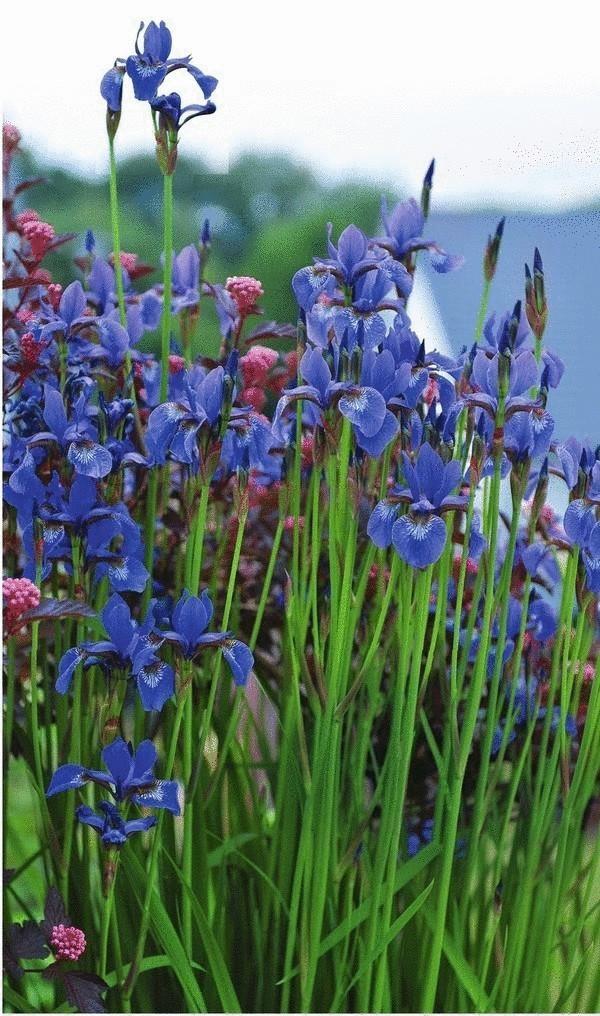
P. S. And remember, only by changing their consumption — together we change the world! ©
Source: www.7dach.ru

Rainbow! It is translated the name of the flower, with a history spanning millennia. So the ancient Greeks called the winged messenger of Zeus and Hera, the personification and goddess of the rainbow. Iris, or iris, was out of the clouds after rain, down to earth (aerial arch, shimmering with all the colors of the solar spectrum. On earth the colors of the rainbow scattered in different colors.

But the richness of shades of the incarnation of iris, truly a gift from the gods that can not be ignored. Hippocrates, who gave the name is familiar to flower, this is clearly not doubt. The founder of modern plant classification, Carl Linnaeus retained the name. Subsequent botanists have collected and counted all irises of our planet, and found that there are more than 200 species!

All irises are divided into two large groups according to the presence or absence of barbs on the outer petals of a flower — bearded and abrogate. To bearded irises include the majority of garden varieties.
Siberian irises are included in the group abrogate irises. This group is the most numerous in nature. The ancestors of the varieties and hybrids grade Siberian irises are 3 types:
- Siberian iris (Iris sibirica),
- iris blood-red (Iris sanguinea, I. East — his old name),
- rosality iris (Iris typhifolia).

The flowers of Siberian irises smaller in comparison with the traditional flowers of garden irises, but they are more in the Bush. At four years of Bush can be up to forty stalks!

In addition, smaller petals easier to resist and to preserve the beauty in the rain and wind. Interestingly, in some varieties the buds bloom at once, Recalling the lush bouquets have others sequentially, prolonging the time of flowering. For different purposes in the design we need both. The longest bloomingvariety with branching stems, including nearly white, with a lavender tint of iris ‘Hohe Warte’. Of domestic varieties takes a record ‘Leader of the Altai’.
Cute Siberian irises with birches in the background, our eyes ready to accept as part of mother nature, so we can easily find area for them in the garden, while the southern luxury exotics from the group of bearded irises are applying for an official reception and ceremonial places.
Delightful flower, wonderful colors and pattern on the petals require proper feeding. Therefore, when choosing varieties for the garden, it is important to evaluate not only the parts of a flower, but the plant shows off its beauty.

Flowers can float flock, towering over the leaves, or be on par with them. And it is quite difficult to appreciate their beauty from afar, if they do not reach the tips of the leaves and hiding among them. At the same time in a container such irises will be interesting. In short, choose your plants with tall stems of 40 to 160 cm!
- Onthe back of mixborders or in the center of island beds good variety with peduncles above the meter and the classic shape of a flower with curved petals down. One of the highest grades (1.6 m) — dark blue with wide petals ‘Hohenflug’. In the foreground are winning varieties with open, Cup-shaped flower.
- At the water's edge.Narrow graceful leaves harmoniously blend with the surrounding coastal vegetation, and flowers, as if taking off from grass moths, picturesquely reflected in the water. (Plants are planted on the shore, but not in water!) Reflected in the water irises will multiply your beauty.

- Groupson the lawn. If you do not cut the stems after flowering, showy boxes of seeds will give a picturesque clumps of additional interest in late summer and autumn. To make it easier to care for iris, protect the plants from lawn with border tape and over mulch the ground around the bushes.
- In large rockeries possible mass planting, in a little — used private copies as vertical accents or planted miniature varieties ‘Baby Sister’, ‘Summerchase Advent’, ‘Annick’, ‘My Little Sunshine’. Miniature varieties of Siberian irises, a few years may suddenly gain altitude. To avoid this, they should be more likely to share.

Generous flowering is only possible in open areas.

Purple and pink varieties are particularly showy.

Selection mistakesto choose the sun. To drainage, these irises do not have high requirements and can also grow on humid areas with a high groundwater table, unsuitable for bearded irises. The soil should be fertile, moderately moist and free of weeds. Best — light loam, rich in humus.
To posability and transplant irises need in the second half of August or in early spring. Before planting, dig the soil deeply and fill her well-decomposed compost or humus. Delenki prepared for planting, pruning leaves and roots. Leaves leave 1/3 of the length, the roots are pruned to 10-12 cm During landing zaglubljaja rhizome approximately 5-7 see this is the difference between Siberian irises from iris group of bearded, rhizome which creeps over the surface. The distance between the bore holes depending on the size telenok — 30-50 cm After planting the plants well and pour over mulch. Most bloom profusely large overgrown bushes. With age, the bloom wanes, and the middle of the Bush is gradually disappearing. When dividing the old bushes, of dead rhizomes are removed.
Attention! Siberian irises prefer slightly acidic soil, so when planting it is impossible to make lime.
Rhodesnow feed irises full of complex mineral fertilizers. While young plants will not get stronger after planting, you need a good watering. Over time, irises are growing, creating a strong root system, and it is easier to cope with lack of moisture. Therefore, adult shrubs can be watered less frequently, but in drought irrigation is required. It is better to water infrequently, but abundantly, promazyvaya the soil to the whole depth of the roots. In the formation of stems after flowering, or make a potassium-phosphorous fertilizer. In late autumn, after first frost (or early spring) old leaves cut to a height of 15 cm So as not to reduce the winter hardiness of shrubs lost their natural shelters, and plants useful to mulch for the winter. Mulching a well-matured humus or compost layer of about 2 cm in spring and after flowering, can replace mineral supplements.
Without dividing the bushes grow in one placeup to 5-10 years.

P. S. And remember, only by changing their consumption — together we change the world! ©
Source: www.7dach.ru




